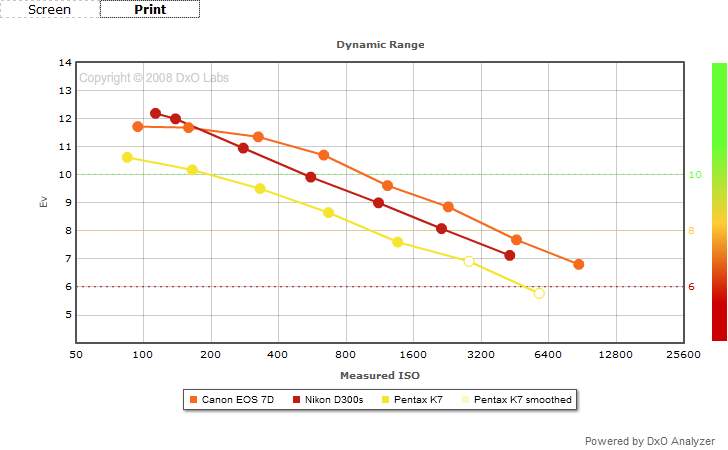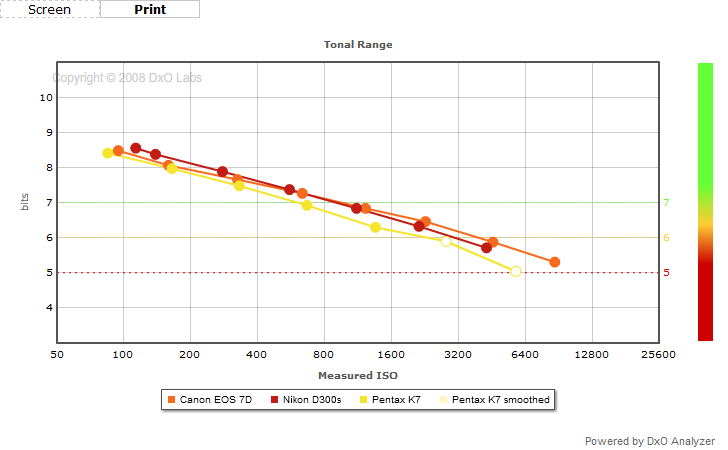|
Canon EOS 7D Review / Test Report - Dynamic Range and Tonality |
|
DSLR Reviews -
DSLRs
|
|
Friday, 29 January 2010 00:00 |
|
Page 5 of 9

Dynamic Range
"Dynamic range or light sensitivity range of a sensor indicates the ratio of light exposure between the highest brightness a camera can capture (saturation) and the lowest brightness it can effectively capture (typically when noise becomes more important than signal, i.e., SNR < 0 dB). This range indicates the maximum contrast that can be effectively captured by the sensor. The larger the dynamic range, the better, as the sensor is able to capture higher-contrast scenes. Note that dynamic range is expressed on a logarithmic scale in EV (same as f-stop), thus an increase of 1EV corresponds to a doubling of dynamic range." (DxO Labs)
A dynamic range (screen) of 11 f-stops @ ISO 100/200 is very good albeit a little worse compared to the Nikon D300s. The situation changes from ISO 400 onwards where the EOS 7D has an advantage of roughly 1/2 f-stops. Interestingly the K-7 results fall apart at high ISOs here. It's obviously quite an achivement that Canon managed to keep a very good dynamic range despite the extreme pixel count or to be precise - the small size of the photodiodes. That said ISO 1600 (screen quality) remains the meaningful limit with a little more potential for prints.
Here's an analysis by our partner, the (DxO Lab):
If you move your mouse cursor over the chart you can switch between the figures for on-screen vs print quality.

"Tonal range indicates how many gray levels are distinguishable up to noise in an image. The tonal range corresponds to an integration of the signal-to-noise ratio (SNR) over the dynamic range of the sensor, and is therefore representative of the average noise level. The larger the tonal range, the better the image: noise is lower, and subtle nuances can be distinguished. It is expressed on a logarithmic scale as the bit depth necessary to encode that number of gray levels: an increase of 1 bit of tonal range corresponds to doubling the number of distinguishable gray levels." (DxO Labs)
Possibly more interesting than the naked noise and dynamic range figures is the tonality which gives you a better idea of the visual effect of both aspects. Thanks to the slightly better sensor noise figures the D300s has a slight edge here over the EOS 7D although the latter catches up at mid ISOs. Based on standard prints both cameras are pretty much indistinguishable and superior to the K-7 again. That all said the finishing line remains at around ISO 1600. ISO 3200 and beyond is not really an option when it comes to screen quality. Prints may still be acceptable at ISO 3200 though.
If you move your mouse cursor over the chart you can switch between the figures for on-screen vs print quality.

|